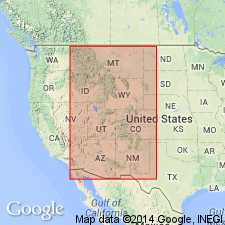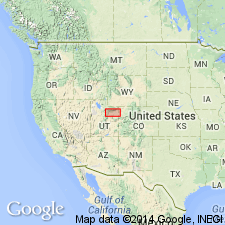
- Usage in publication:
-
- Duchesnean age
- Modifications:
-
- Original reference
- AAPG geologic province:
-
- Uinta basin
Summary:
Pg. 10, pl. 1. Duchesnean age. Provincial time term, based on Duchesne River formation of northeastern Utah. Covers interval between Uintan (Eocene) and Chadronian (Oligocene) ages. [In upper part of Eocene; = TELEODUS faunal zone.] Report defines 18 provincial time terms, based on mammal-bearing units, for North American continental Tertiary. [For sequence see under Puercan.]
Source: US geologic names lexicon (USGS Bull. 1200, p. 1170).

- Usage in publication:
-
- Duchesnean fauna
- Modifications:
-
- Age modified
- AAPG geologic province:
-
- Uinta basin
Summary:
Many faunal sequences do not include a Duchesnean fauna. Duchesnean fauna of the type locality is an early Chadronian fauna. Evernden and others (1964) obtained a K-Ar age of 38.5 from one Duchesnean locality. Berggren and others (1985) gave the range for the Duchesnean fauna from 38 to 42 Ma. Present authors question reliability of K-Ar ages of biotite from tuffs. Isotopic ages from tuffs in the Duchesne River Formation indicate that the Duchesnean fauna is of earliest Oligocene age. Area reported on is in Duchesne and Uinta Cos, UT in the Uinta basin.
Source: GNU records (USGS DDS-6; Denver GNULEX).
For more information, please contact Nancy Stamm, Geologic Names Committee Secretary.
Asterisk (*) indicates published by U.S. Geological Survey authors.
"No current usage" (†) implies that a name has been abandoned or has fallen into disuse. Former usage and, if known, replacement name given in parentheses ( ).
Slash (/) indicates name conflicts with nomenclatural guidelines (CSN, 1933; ACSN, 1961, 1970; NACSN, 1983, 2005, 2021). May be explained within brackets ([ ]).

